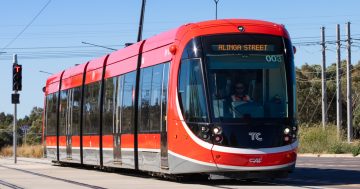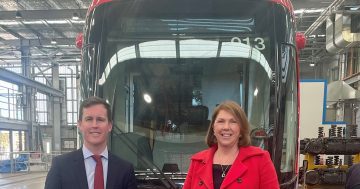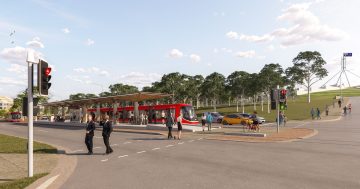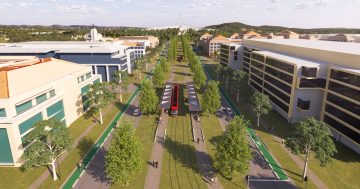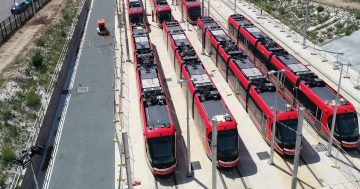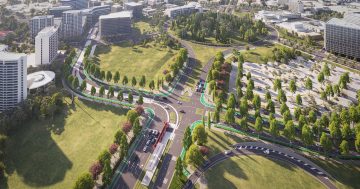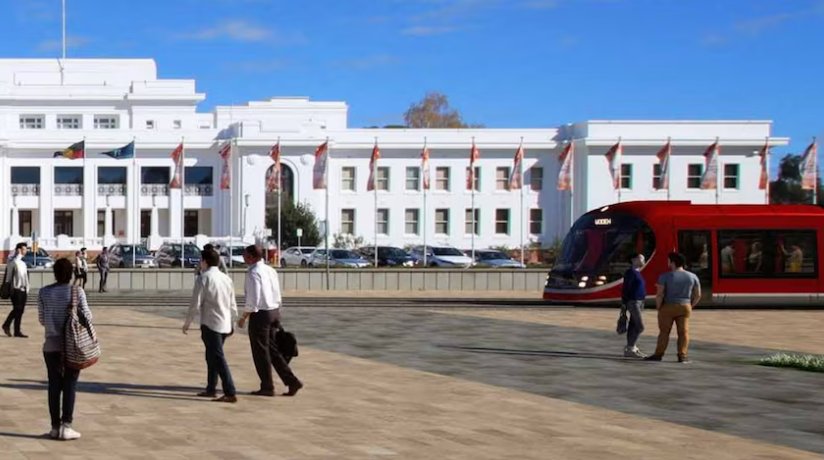
Still possible? An early artist’s impression of light rail passing Old Parliament House. Image: ACT Government.
The ACT Government isn’t saying what problems have been encountered assessing the route for light rail Stage 2B to Woden nor whether it remained its preferred alignment.
National Capital Authority CEO Sally Barnes revealed last week that ACT officials had advised that the State Circle route may not be viable due to engineering and cost issues.
They had asked the NCA to consider whether an alternative route across the parliamentary zone was possible, indicating that the government might have to revert to the so-called Barton dogleg route.
Ms Barnes said the officials were not ruling out the State Circle route, but early work had thrown up doubts about the narrowness of the turn off Commonwealth Avenue around Parliament House.
The government did not provide any details about the problems its staff had found on the State Circle route, saying its focus was on Stage 2A to Commonwealth Park, the approval of which is imminent.
“Once the ACT Government receives planning approval for Stage 2A, the focus will shift onto progressing early design and planning for Stage 2B through the Parliamentary Triangle to Woden,” a spokesperson said.
Last week’s budget provided $50 million to progress the development of an environmental impact statement (EIS) and design and technical studies on the Stage 2B route.
“This work needs to occur to properly assess the technical challenges and detailed route options as well as addressing and responding to the heritage and environmental values of the National Capital Area,” the spokesperson said.
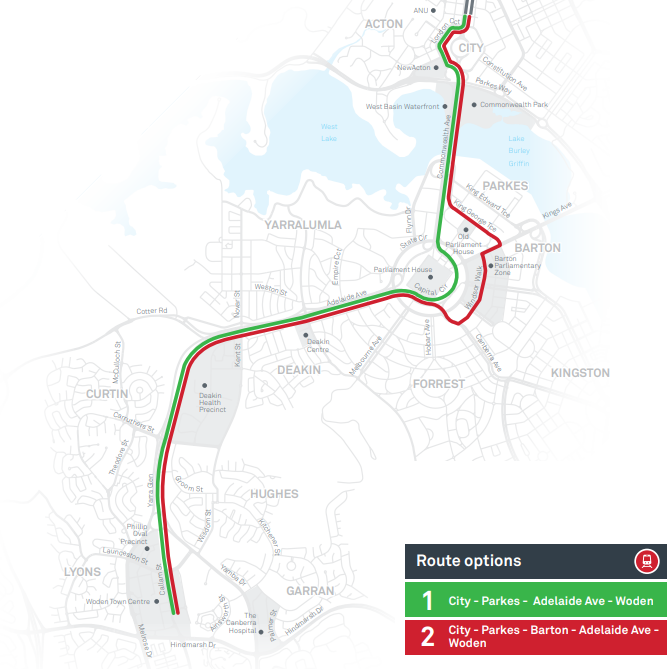
Light rail route options. Image: ACT Government.
Ms Barnes said the NCA was open to the possibility of light rail travelling across the parliamentary zone but only if the area’s many heritage values could be protected.
She did not want something that would scar the landscape.
The original 2B route travelled along King George Terrace in front of Old Parliament House and then to Barton via National Circuit, then Canberra Avenue to Adelaide Avenue.
The heritage and environmental challenges convinced the government to adopt the more direct and shorter route, but the problems with State Circle and the recent public service developments in Barton, including the proposed National Security Precinct and new agency buildings such as the Tax Office, may put a reversal in play.
Ms Barnes said those public servants would need efficient and convenient public transport so there may be a case now for locating the line closer to the places of work.
Chief Minister Andrew Barr has argued this surge in public service development in Barton, which should add about 5000 workers to the precinct, put the onus on the Commonwealth to help provide the public transport that will serve them.
The government would not put any timeframe on when it could submit a development/works application or if the State Circle problems would delay their preparation.
The Canberra Liberals, who have committed to canning light rail beyond Stage 2A, continue to put heat on the government to be more upfront about its plans and the cost of the project.
Last week they called in the Assembly for the government to not proceed with any works contracts or infrastructure procurements for stage 2B until a cost-benefit assessment had been provided.
The project faces multiple approvals including from the NCA and Federal Parliament.
The government spokesperson said the complexities of the project were why it was split into two stages.
“It was acknowledged that it would take time to work through the complexity of planning the route through the Parliamentary Triangle while work could begin earlier on building the simpler Stage 2A project,” the government spokesperson said.












